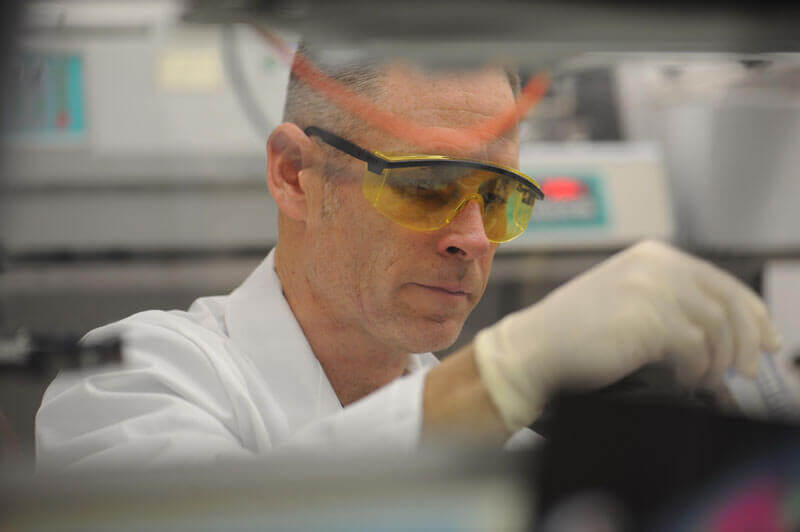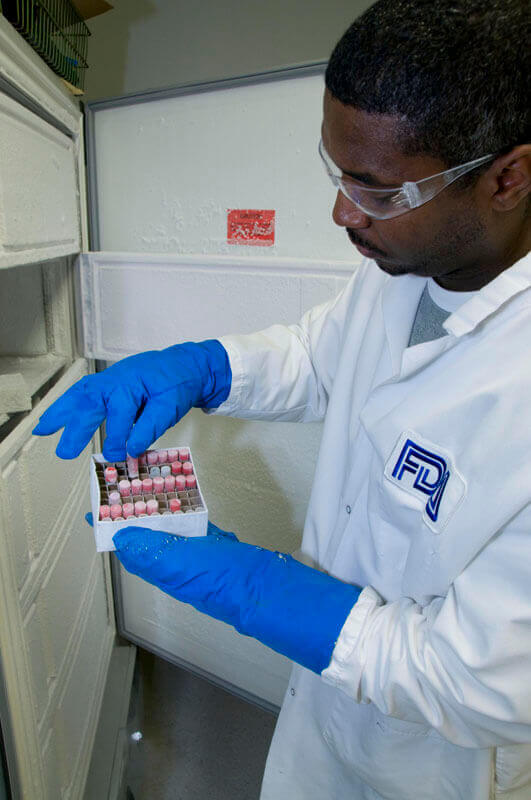 21st Century Cures.Last week, the House Energy and Commerce Committee unanimously voted to approve the 21st Century Cures Act—a bill that aims to speed the development,
approval, and introduction of new health technologies.
21st Century Cures.Last week, the House Energy and Commerce Committee unanimously voted to approve the 21st Century Cures Act—a bill that aims to speed the development,
approval, and introduction of new health technologies.
Clocking in at over 300-pages, the legislation is packed full of proposed changes to the way health products are developed by the US National Institutes
of Health (NIH) and regulated by the US Food and Drug Administration (FDA). Below, GHTC breaks down a few of the proposed changes that could matter
most to global health researchers, product developers, and advocates.
NIH receives boost in funding
The legislation would reauthorize the NIH for the next three fiscal years (FY) and boost funding over that period, starting with US$31.8 billion in FY 2015 and increasing to $33.3 billion and $34.8 billion in FY 2017 and 2018 respectively. (As a reference,
current NIH funding is around $30.3 billion.) It is important to note this boost is in discretionary
spending, rather than mandatory spending, so these increases could still be subject to spending caps and sequestration cuts which in the past have significantly reduced NIH’s budget.
The legislation would also provide $10 billion in new NIH funding over the next five years through the establishment of a new “NIH Innovation Fund.” This pot of money is mandatory spending, and thus would NOT be subject to spending caps and sequestration. The legislation mandates that at least $500
million per year of the fund would go to a new Accelerating Advancement Program, which seeks to address unmet medical needs in the United States including
infectious diseases and neglected tropical diseases and antibiotics.
The legislation would also mandate that the NIH, and the centers and institutes within it, develop five-year strategic plans to guide research activities.
The language defining how NIH must use portions of the funding is unlike current NIH funding allocations and has some concerned that Congress is being
too prescriptive with scientific research.
NCATS permitted to expand into later stage research
 Photo: National Institute of Allergy and Infectious DiseasesThe Cures Act would remove current restrictions that prohibit the National Center for Advancing Translational Sciences (NCATS) at NIH from supporting clinical trials beyond phase IIA—the
first round of trials to test efficacy, rather than just safety of a treatment in humans.
Photo: National Institute of Allergy and Infectious DiseasesThe Cures Act would remove current restrictions that prohibit the National Center for Advancing Translational Sciences (NCATS) at NIH from supporting clinical trials beyond phase IIA—the
first round of trials to test efficacy, rather than just safety of a treatment in humans.
NCATS was created to help advance translational science, particularly for rare diseases in the United States. At the time it was created, Congress prohibited
the center from conducting later stage clinical research out of fear that it would then be competing with and duplicating private-sector product development
activities. This legislation lifts that prohibition, extending NCATS ability to conduct trials through stage III—the final pre-market stage where
safety and efficacy of a treatment are tested in in large groups of individuals.
Many global health conditions qualify as rare diseases under the program’s definition because they impact fewer than 200,000 people in the United States, meaning this legislation change could permit NCATS to support later stage clinical
research for many neglected diseases and other global health conditions.
Bill promotes pediatric research
Under the legislation, NIH would be required to establish a national pediatric research network to pool resources and coordinate activities on pediatric diseases. This legislation also encourages the NIH and FDA to work with the European Union,
industry, and other partners to establish a global pediatric clinical trials network.
Drugs often react differently in children than they do in adults, and creating pediatric-specific treatments has proved challenging for researchers and
product developers producing treatments to be used both domestically and globally. This legislation seeks to overcome some of these challenges by promoting
development and testing of pediatric formulations of drugs.
Congress acknowledges importance of agency participation in scientific conferences
The act includes a sense of Congress acknowledging the importance of participation in scientific conferences and meetings for both NIH and FDA employees. While the legislation
doesn’t go so far as to lift existing restrictions or provide funding for participation, Congress’s recognition of this importance is a critical step
forward.
A GHTC analysis found
that many agency representatives cite a lack of funding for participation in scientific conferences as a serious hindrance to enhancing coordination
and collaboration among agencies engaged in global health research and development (R&D).
Increases use of biomarkers and surrogate endpoints as clinical evidence at FDA
 Photo: FDA/Michael J. ErmarthThe legislation paves the way for the FDA to rely on biomarkers and other surrogate endpoints to accelerate product approval for a broader category of products. Proving that a product or treatment can successfully produce the desired clinical endpoint—may not be feasible
in certain circumstances or can often require clinical trials that are large, long, and costly. So in some cases, trial sponsors have proposed using
biomarkers—or biological indicators—that are correlated with the clinical endpoint as a substitute to assess the efficacy of a treatment
or product more easily. For example, to measure whether a treatment prolongs cancer survival—a clinical endpoint—one might assess a surrogate
endpoint like whether the treatment succeeds in shrinking tumors.
Photo: FDA/Michael J. ErmarthThe legislation paves the way for the FDA to rely on biomarkers and other surrogate endpoints to accelerate product approval for a broader category of products. Proving that a product or treatment can successfully produce the desired clinical endpoint—may not be feasible
in certain circumstances or can often require clinical trials that are large, long, and costly. So in some cases, trial sponsors have proposed using
biomarkers—or biological indicators—that are correlated with the clinical endpoint as a substitute to assess the efficacy of a treatment
or product more easily. For example, to measure whether a treatment prolongs cancer survival—a clinical endpoint—one might assess a surrogate
endpoint like whether the treatment succeeds in shrinking tumors.
At the moment, the FDA permits use of surrogate endpoints for accelerated approval for drugs intended to treat a narrow category of patients with life-threatening
illnesses and unmet needs. The bill calls on the FDA to establish guidance for use of qualifying biomarkers and work with sponsors to establish parameters
that would allow for approval of a broader set of products using surrogate endpoints.
Use of surrogate endpoints poses both benefits and challenges. It could lower R&D costs and reduce the length of time needed to conduct clinical trials,
thereby accelerating the availability of treatments. However, at the same time, it can often prove difficult to determine if a surrogate endpoint or
biomarker is a reliable indicator that the product has the intended clinical benefit. For example, elevated cholesterol levels are linked with heart
disease, but at the same time, it is possible that a drug that reduces cholesterol will have no measurable impact in preventing deaths from heart disease.
Spurring antibiotic drug development
If enacted, the Cures Act would create a new expedited FDA review pathway for antibiotics intended to treat “a serious or life-threatening disease, condition, or indication” and intended for use in a limited target population. This new pathway
could allow the FDA to approve a product based on earlier Phase II trials and surrogate endpoints, rather than larger, later-stage Phase III clinical
trials.
Some organizations support this new pathway, arguing that it would expedite patient access to new antibiotics and help tackle growing antibiotic drug resistance.
Others argue that this new pathway would allow products to be approved based on lower FDA standards,
which could in turn put patient health and safety at risk.
The bill would also increase Medicare payments to hospitals who use certain new antibiotics as a way to financially incentivize private-sector development of critically-needed new antibiotics. However, some critics of this provision argue
that it would be counterproductive to the intended goals and would instead encourage overuse of new antibiotics, which would in turn hasten the development of drug resistant strains and further exacerbate the problem of antibiotic resistance.
Changing the way medical devices are reviewed and approved
 Photo: FDAUnder the legislation, medical devices would be eligible for “breakthrough” designation by the FDA, which allow them to receive priority, expedited review.
Photo: FDAUnder the legislation, medical devices would be eligible for “breakthrough” designation by the FDA, which allow them to receive priority, expedited review.
This new priority review program for devices is modeled after the breakthrough therapies program for drugs and is intended for “breakthrough technologies” for either conditions “for which no approved alternatives exist” or that would offer “significant advantage
over existing approved or cleared alternatives.”
In addition to creating this priority review pathway for medical devices, the legislation would also direct the FDA to take steps to ensure clinical trial
designs for medical devices are “as efficient as practicable,” by exploring options such as the adoption of shorter or smaller trials, use of surrogate
endpoints, or adaptive trial design.
In an effort to further accelerate approvals of medical devices, the legislation would significantly alter the type of evidence the FDA could consider when reviewing a device for approval.
This bill would allow the FDA to consider as valid scientific evidence case histories, registry data, studies published in peer-reviewed journals,
and data collected in countries other than the United States. While this change could help speed the testing and approval of critically needed devices,
critics argue it could also undermine FDA’s ability to ensure medical device safety and efficacy—
citing the fact that case histories are anecdotal and lack a control group, while journal articles can often leave out critical information or can include mistakes, misrepresentation, or fraud,
which the FDA may not become aware of if it relies solely on the published articles.
Expansion of market exclusivity, but less than originally anticipated
The legislation would extend by six months market exclusivity for drugs approved for a new indication or use for a rare disease or condition,
extending a drug’s exclusivity period not only for the new indication, but for all of the drug’s indications.
The purpose of market exclusivity is to help companies recoup the investments they made into R&D for a product or therapy and encourage future private-sector
investment in research and product development. However, critics also note that extending market exclusivity delays entry of generics into the marketplace
which can lead to increased costs for patients and limit affordable access to lifesaving health technologies. Product price can pose a significant
barrier to access particularly in low- and middle-income countries.
Earlier versions of the legislation featured additional provisions extending market exclusivity that were taken out of the version approved by the Committee.
These included provisions which would have permitted the sale of market exclusivity to other companies and extended exclusivity for follow-on drugs and first-to-file American-made
generic drugs.
FDA receives increased funding
To ensure FDA has the capacity to carry out its programming, the legislation would increase FDA funding by $550 million over the next five years.
The bill would also exempt FDA user fee programs from sequestration spending cuts.
While passage of the legislation through the Committee is a critical milestone, the act still has a long journey before it can become law. The legislation
is expected to be voted on by the full House of Representatives in June. Meanwhile, parallel legislation is under development in the Senate. If both
pass their respective chambers, the two versions will eventually have to be reconciled by both chambers before the legislation can be passed and then
sent to the President for consideration. GHTC will continue to monitor this legislation as it develops.




